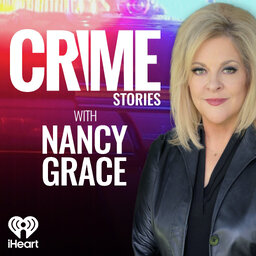Delphi Murders: Suspect Confesses 61 Times To Girls’ Murders, Wife Says “Stop Talking!”
On day five of Richard Allen's murder trial, jurors heard testimony from the forensic pathologist who performed the autopsies of Abby Williams and Libby German, as well as from a witness who saw the 'Bridge Guy' on the day of the murders.
Dr. Ronald Kohr, who previously reported that he believed two knives were used in the killings, testified that he now believes the 'serration' seen in some of Libby's wounds was likely caused by an element on the handle of the blade. Kohr suggested that a box cutter with an extra thumb grip could have been the sole murder weapon. This testimony surprised Allen's defense team and directly contradicted Andrew Baldwin's opening statement, aligning instead with the state's claim that Allen used a box cutter to slash the girls' necks.
Sarah Carbaugh, a lifelong Delphi resident who was walking her dogs on the afternoon of February 13, 2017, also testified about her sighting of the 'Bridge Guy.' She said she saw a man walking west on Country Road 300, covered in blood and mud, as if he had fallen on the trail. Carbaugh later recognized him from the video clip released from Libby's phone, but waited three weeks to report the sighting due to anxiety.
Allen's defense questioned Carbaugh about discrepancies in her description during cross-examination, noting that her recorded interview mentioned blood only once. Baldwin also pointed out unusual details in her description, including her remark about the man's "effeminate eyes." Carbaugh pushed back, reminding Baldwin that over an hour of her interview video had been accidentally destroyed.
Jurors have yet to hear testimony on Allen's 61 confessions. Among the hundreds of pages of court documents released since the start of the trial, a signed confession letter from Allen, stating, "I hope I get the opportunity to tell the families I'm sorry."
Joining Nancy Grace today:
- Philip Dubé – Court-Appointed Counsel, Los Angeles County Public Defenders: Criminal & Constitutional Law; Forensics & Mental Health Advocacy
- Dr. Bethany Marshall – Psychoanalyst, Author – “Deal Breaker,” featured in hit show: “Paris in Love” on Peacock;, Instagram & TikTok: drbethanymarshall, X: @DrBethanyLive
- Bill Daly – Former FBI Investigator and Forensic Photography, Security Expert
- Joe Scott Morgan – Professor of Forensics: Jacksonville State University, Author, “Blood Beneath My Feet,” and Host: “Body Bags with Joseph Scott Morgan;” Twitter/X: @JoScottForensic
- Barbara MacDonald – Court TV Documentary Producer, Co-Host/Producer of HLN’s “Down The Hill Podcast” and Documentary, X: @NewsyBarbara
 Crime Stories with Nancy Grace
Crime Stories with Nancy Grace


